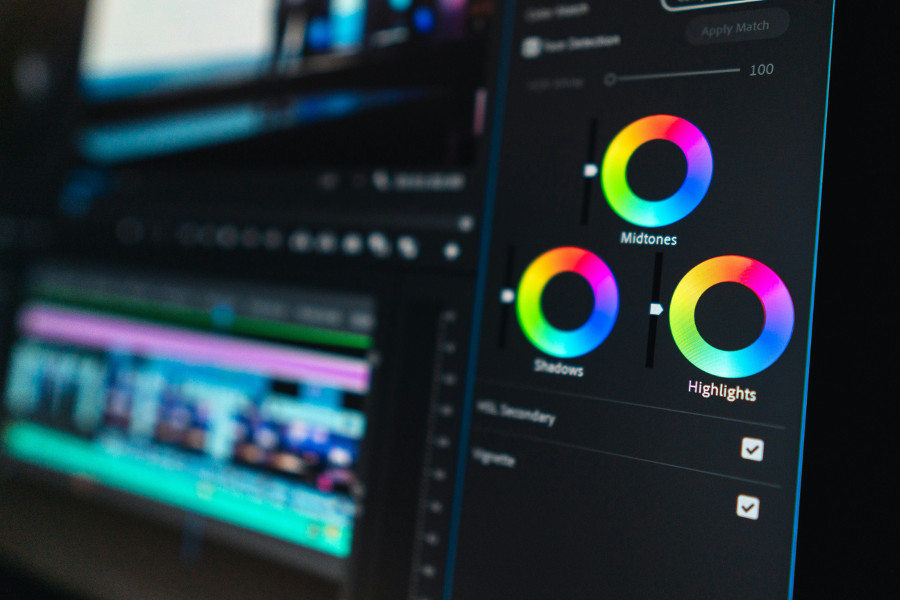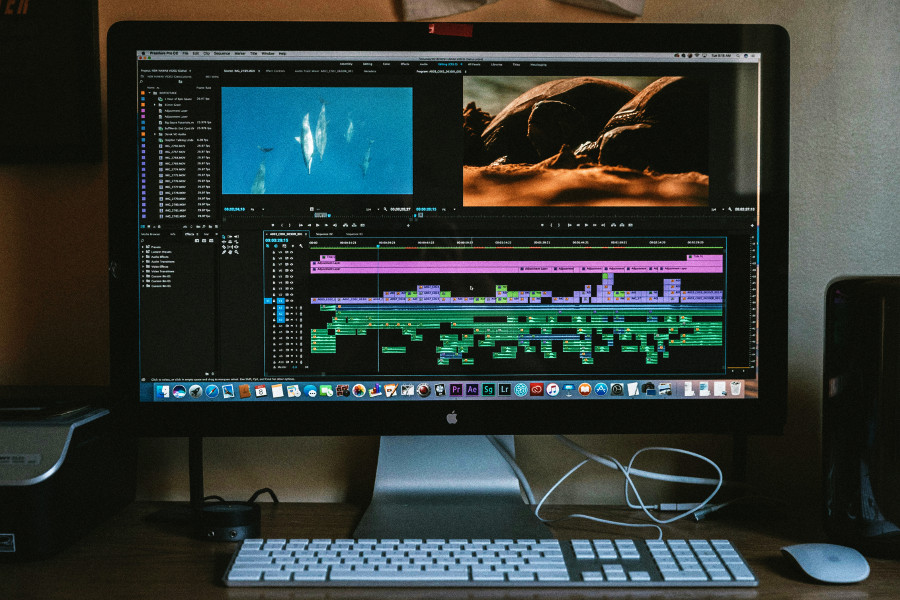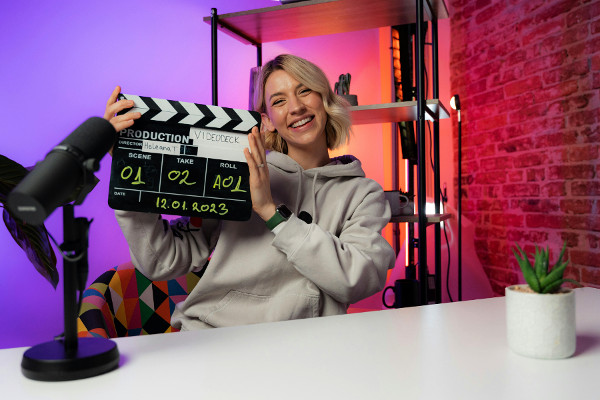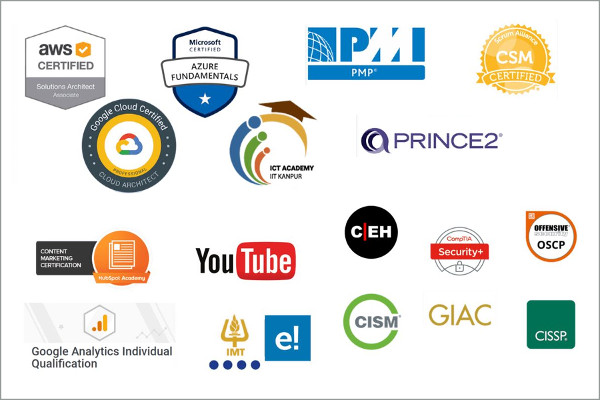From Amateur to Pro Editor: Top Methods to Learn Digital Video Editing Today
Digital video editing might sound like something only professional filmmakers do in dark studios filled with expensive equipment - but these days, it’s becoming more and more of an everyday skill. With video content everywhere - from social media feeds and YouTube to documentaries and educational videos - knowing how to edit videos is quickly turning into a kind of modern-day literacy.

There’s a simple reason for this. We’re surrounded by stories told through video. Whether we’re watching travel vlogs, cinematic short films, tutorials, or even a five-second TikTok clip, editing plays a huge part in shaping what we see and how we feel about it. Good editing can make a simple moment feel magical. Poor editing can make even the best footage feel flat.
If you’ve ever wanted to learn how to edit your own videos - or even wondered where to begin - this guide is here to help. It doesn’t matter if you’re aiming to become a professional or just want to make better content for fun. With the right approach, learning video editing is entirely within your reach.
Understand the Fundamentals First
As with most skills, video editing begins with understanding the basics. And no, this doesn’t mean memorizing every keyboard shortcut or mastering advanced effects right away. It simply means getting familiar with the building blocks of the craft.
Imagine trying to write a short story without knowing what a paragraph or a sentence is. Video editing works the same way. There’s a visual language to it - a rhythm and structure that guides the viewer’s attention and emotion.
Some of the most important concepts include:
- The timeline, where your clips are arranged.
- Cuts and transitions, which guide the flow of scenes.
- Color correction, which ensures consistency across footage.
- Keyframes, which allow movement and animation.
- Rendering, which turns your project into a finished video.
These might sound technical at first, but once you start watching some beginner tutorials or reading a few blog posts, they quickly become second nature. Websites like Adobe’s official help center or beginner-friendly YouTube tutorials can introduce you to these ideas in a very straightforward way.
The key is not to rush. Take your time getting comfortable with the language of editing, because everything else builds on top of that.
Choose the Right Software
You don’t need to invest hundreds of dollars into editing software right away. In fact, you probably shouldn’t. There are plenty of excellent free tools out there that are perfect for learning.
Free options to consider:
- DaVinci Resolve – A powerful editor with professional-grade features, especially good for color work.
- HitFilm Express – Great for beginners and includes visual effects tools.
- iMovie – Simple and clean, ideal for Mac users taking their first steps.
Paid (and more advanced) software:
- Adobe Premiere Pro – Used in professional studios around the world.
- Final Cut Pro X – Optimized for Mac, fast and feature-rich.
- Avid Media Composer – A favorite in film and TV editing.
Each program has its own strengths. If you're new to editing, starting with something free and user-friendly is often the smartest choice. Once you know the basics and feel ready for more, moving on to more advanced software will be much easier.
Also, check your computer’s capabilities before downloading anything. Some programs, like DaVinci Resolve, require a fairly strong system to run smoothly.

Use Online Courses and Tutorials
One of the easiest ways to learn how to edit videos is simply to watch someone else do it. Online courses and tutorials provide a step-by-step way to see not just what to do, but why you’re doing it.
Platforms to explore:
- Udemy – Offers thousands of editing courses at different skill levels.
- Skillshare – Focuses on creative skills with shorter, project-based lessons.
- Coursera – More academic in tone, but useful if you like structured learning.
- LinkedIn Learning – Especially helpful for business-oriented or marketing video editing.
Many of these platforms let you learn at your own pace, and some even offer certificates when you complete a course. But there’s also a lot of value in free tutorials, especially on YouTube.
Some standout YouTube channels include:
- Peter McKinnon – Known for cinematic storytelling and clear explanations.
- Cinecom.net – Great for learning practical effects and quick tips.
- Justin Odisho – Focused on editing techniques and software walkthroughs.
- Premiere Gal – Offers tutorials across different platforms and editing styles.
You don’t have to choose one path - mix and match. Do a structured course while also diving into tutorials for the specific effects or transitions you’re curious about.
Practice Through Real Projects
The only way to truly understand editing is to do it. Watching tutorials is helpful, but nothing replaces the hands-on experience of building your own projects from scratch.
Start with something simple. Cut together a short video of your day. Edit a slideshow for a friend’s birthday. Create a short montage using free stock footage.
Need ideas? Try:
- Editing a travel video or nature walk.
- Creating a trailer for a movie that doesn’t exist.
- Recutting an existing video in a new style or mood.
- Making a 60-second promo for a local event or cause.
You can use your own footage or download clips from sites like Pexels, Mixkit, or Pixabay. These offer free stock videos you can use without worrying about copyright issues.
Once you’ve finished something, share it. Upload it to YouTube, share it on social media, or ask for feedback on platforms like Reddit’s r/VideoEditing. Real, constructive feedback is one of the best ways to grow.
Join Online Communities and Forums
Editing can feel like a solitary activity, but you don’t have to go through it alone. There are countless online communities where beginners and pros alike share tips, ask questions, and encourage each other.
Places to connect:
- Reddit – Subreddits like r/VideoEditing and r/Filmmakers are full of helpful discussions.
- Facebook Groups – Search for editing groups tailored to your software or experience level.
- Discord Servers – Real-time chat and feedback in more interactive spaces.
- StackExchange – Great for technical questions and troubleshooting.
Sometimes, just seeing what others are working on - or hearing about their struggles - can help you feel less overwhelmed. These spaces are also great for discovering new tools, plugins, or creative ideas you might not find on your own.

Learn by Breaking Down Professional Work
There’s a lot to learn from simply watching videos with an editor’s eye. Professional videos, whether it's a film, a music video, or even a high-end commercial, are filled with editing choices that shape the viewer’s experience.
Try this:
- Watch a video you admire.
- Pause and take notes: How are the scenes cut? What kind of transitions are used? How does the sound affect the pacing?
- Then try to recreate a short segment of that video with your own footage or stock clips.
This kind of “reverse engineering” can teach you a lot about timing, rhythm, and emotional impact. You’ll start noticing details - like how music builds tension or how color can influence mood - that you might have missed before.
Blogs like StudioBinder or Frame.io Insider often feature breakdowns of editing styles used in popular films or campaigns, which can help you go even deeper.
Explore Specialized Skills
Once you’ve gotten comfortable with the basics, you might feel drawn toward more advanced or niche areas of editing.
These might include:
- Motion Graphics – Adding animated titles, intros, or dynamic overlays.
- Color Grading – Giving your footage a specific look or cinematic feel.
- Audio Mixing – Balancing dialogue, music, and sound effects for clarity and impact.
These aren’t just “nice extras” - they’re part of what makes an editor’s style stand out. Tools like After Effects for motion graphics or DaVinci Resolve for color grading can take your work to the next level.
If you're curious, platforms like School of Motion and FXphd are excellent for deeper dives into these topics.
Stay Updated and Keep Practicing
Like most creative fields, video editing is always evolving. Trends come and go. Tools get better. New platforms change the way we watch and create content.
To stay in the loop:
- Follow blogs like No Film School or PremiumBeat.
- Subscribe to newsletters and YouTube channels that regularly cover editing trends.
- Experiment with new software updates and plugins.
And remember, the single best way to improve is by doing. Even if your edits feel rough or imperfect at first, every project you finish will bring you closer to your goals.
Conclusion
Learning digital video editing is a journey that combines creativity, technical skill, and storytelling. It doesn’t have to be intimidating - there’s a world of resources out there ready to guide you, whether you prefer structured courses, hands-on practice, or community support.
Start with the basics, pick the right tools for your needs, and keep practicing. Use tutorials to guide you but don’t be afraid to experiment and find your own style. Engage with other editors online, learn from the pros by breaking down their work, and explore specialized skills that excite you.
Remember, every pro editor was once a beginner. The important part is to keep creating, keep learning, and keep telling stories - one frame at a time.
So, grab your footage, open your editing software, and start your journey from amateur to pro today.



